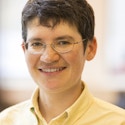Simons Investigators
- Email:
mps@simonsfoundation.org
Simons Investigators are outstanding theoretical scientists who receive a stable base of research support from the foundation, enabling them to undertake the long-term study of fundamental questions.
The Investigator program has been discontinued.
Simons Investigators in Mathematics, Physics, Astrophysics and Computer Science
The intent of the Simons Investigators in Mathematics, Physics, Astrophysics and Computer Science programs is to support outstanding theoretical scientists in their most productive years, when they are establishing creative new research directions, providing leadership to the field and effectively mentoring junior scientists. A Simons Investigator is appointed for an initial period of five years. Renewal for an additional five years is contingent upon the evaluation of scientific impact of the Investigator.
Simons Investigators in Mathematical Modeling of Living Systems (MMLS)
This program aims to help the research careers of outstanding scientists working on mathematical and theoretical approaches to topics in the life sciences. A Simons Investigator in MMLS is appointed for five years.
Math+X Investigators
This program encourages novel collaborations between mathematics and other fields in science or engineering by providing funds to professors to establish programs at the interface between mathematics and other fields of science or engineering. A Math+X Investigator is appointed for an initial period of five years. Renewal for an additional five years is contingent upon the evaluation of scientific impact of the Investigator.
- Email:
mps@simonsfoundation.org
- Email:
mps@simonsfoundation.org
2014
Alex Eskin, Ph.D.
University of Chicago
Alex Eskin is a leading geometer with important contributions to geometric group theory, ergodic theory and number theory. He has applied ideas from dynamical systems to solve counting problems in the theory of Diophantine equations, the theory of the mapping class group and mathematical billiards on rational polygons.
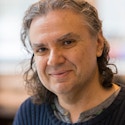
Larry Guth, Ph.D.
Massachusetts Institute of Technology
Larry Guth is a geometer with outstanding contributions to Riemannian geometry, symplectic geometry and combinatorial geometry. In Riemannian geometry, he solved a long-standing problem concerning sharp estimates for volumes of k-cycles. In symplectic geometry, he disproved a conjecture concerning higher-dimensional symplectic invariants by constructing ingenious counterexamples. In combinatorial geometry, he adopted a recent proof of the finite field analog of the Kakeya problem to the Euclidean context. He and Bourgain established the best current bounds to the restriction problem. Extending this work, he and Katz essentially solved one of the most well-known problems in incidence geometry, Erdős’s distinct distance problem, which was formulated in the 1940s.
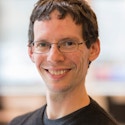
Richard Kenyon, Ph.D.
Yale University
Richard Kenyon’s central mathematical contributions are in statistical mechanics and geometric probability. He established the first rigorous results on the dimer model, opening the door to recent spectacular advances in the Schramm–Loewner evolution theory. In most recent work, he introduced new homotopic invariants of random structures on graphs, establishing an unforeseen connection between probability and representation theory.

Andrei Okounkov, Ph.D.
Columbia University
Andrei Okounkov’s work spans a wide range of topics at the interface of representation theory, algebraic geometry, combinatorics and mathematical physics. He has made major contributions to enumerative geometry of curves and sheaves, the theory of random surfaces and random matrices. His papers reveal hidden structures and connections between mathematical objects and introduce deep new ideas and techniques of wide applicability.

Moses Charikar, Ph.D.
Princeton University
Moses Charikar is one of the world’s leading experts on the design of approximation algorithms. He gave an optimal algorithm for the unique games, a central problem in complexity theory. His work sheds light on the strengths and limitations of continuous relaxations for discrete problems. He has uncovered new obstructions to dimension reduction and compression of geometric data. His algorithms for locality-sensitive hash functions are now de facto standard in real-life applications.
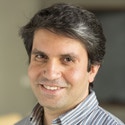
Shang-Hua Teng, Ph.D.
University of Southern California
Shang-Hua Teng is one of the most original theoretical computer scientists in the world, with groundbreaking discoveries in algorithm design, spectral graph theory, operations research and algorithmic game theory. In joint work with Dan Spielman, Shang-Hua introduced smoothed analysis, a new framework that has served as a basis for advances in optimization, machine learning and data mining. His work laid foundations for many algorithms central in network analysis, computational economics and game theory.
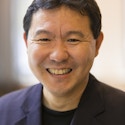
Patrick Hayden, Ph.D.
Stanford University
Patrick Hayden’s work on the requirements for secure communication through quantum channels transformed the field of quantum information, establishing a general structure and a set of powerful results that subsumed most of the previous work in the field as special cases. More recently, he has used quantum information theory concepts to obtain new results related to the quantum physics of black holes.
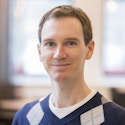
Marc Kamionkowski, Ph.D.
Johns Hopkins University
Marc Kamionkowski is one of the leading theorists working at the intersection of particle physics, cosmology and astrophysics. His early work helped found the field of precision cosmology, showing how observations of the angular structure of the cosmic microwave background revealed information about fundamental-physics effects in the early Universe. He has also done work that has been crucial to our understanding of the physics of dark matter. His review articles and talks have helped define this new and growing field. Kamionkowski’s recent work centers on the development of new methods for the use of astrophysical measurements to probe properties of fundamental physical interest.
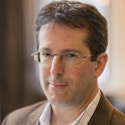
Leo Radzihovsky, Ph.D.
University of Colorado Boulder
Leo Radzihovsky is a condensed matter physicist whose work bridges the divide between the classical and quantum aspects of the subject, using mathematical tools and insights developed in one field to make seminal contributions in the other. His focus is on systems where fluctuations and heterogeneity play qualitative roles. He is known for his work on bent-core and other exotic liquid crystals; on fluctuating membranes and driven elastic media in the presence of quenched disorder, including the prediction of the transverse smectic phase; and on degenerate atomic gasses, where his rigorous work on the BCS-BEC crossover, particularly in systems with narrow Feshbach resonances, with and without “spin” imbalance, uncovered a host of new phenomena including topological phase transitions.

Rachel Somerville, Ph.D.
Rutgers, The State University of New Jersey
Rachel Somerville is a theoretical astrophysicist known for her contributions to the development of `semianalytic modeling’ methods that combine computational and pencil-and-paper theory, and her use of these methods, to further our understanding of the physical mechanisms of the formation, structural evolution and nuclear activity of galaxies. Her work has enabled, for example, the development of a comprehensive picture of the way in which the growth of supermassive black holes, and the energy they release during their formation, is linked with the structural properties of galaxies as well as their star formation activity. Somerville resigned her Investigatorship in 2018 to take a position at the Flatiron Institute.
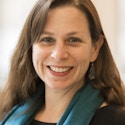
Anatoly Spitkovsky, Ph.D.
Princeton University
Anatoly Spitkovsky’s large-scale computer simulations of astrophysical plasmas have been instrumental in bringing a new level of quantitative precision to the field. His work on particle acceleration in astrophysical shocks is changing the way we understand high-energy astrophysics, and he is also known for his work on pulsar magnetospheres.
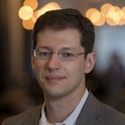
Iain Stewart, Ph.D.
Massachusetts Institute of Technology
Iain Stewart works in the physics of elementary particles, investigating fundamental questions in quantum chromodynamics, i.e., the interactions of quarks and gluons via the strong force. He is particularly known for his role in inventing soft collinear effective field theory, a theoretical tool for understanding the particle jets produced by high energy collisions in accelerators such as the LHC. He has established factorization theorems that enable the clear interpretation and physical understanding of the collision products. Methods he has developed have been used in the search for the Higgs boson, to gain new insights into effects of CP violation in B-meson production and to test for beyond-standard-model physics.
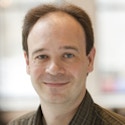
Paul François, Ph.D.
McGill University
Paul François is known for his work on physical aspects of embryonic development, in particular his analysis of the mechanisms underlying embryonic patterning, for example, the role of genetic oscillators in the development of vertebrae. His research plans involve investigations of the physical bounds for information processing in the immune system and further investigation of the physical mechanisms of vertebrae formation.

Oskar Hallatschek, Ph.D.
University of California, Berkeley
Oskar Hallatschek studies how large-scale patterns such as collective motion, synchronization, random genetic drift or Darwinian selection emerge in populations from the joint actions of heterogeneous individuals. He is particularly known for his work on the influence of spatial structure on biological processes, for example, how noisy traveling waves control the speed of many important dynamical processes, including biochemical reactions, range expansions, epidemic outbreaks or biological evolution. Hallatschek’s research plan involves extending his work to study the feedback between ecology and evolution, for example, how populations can evolve to become invasive, using growing biofilms as a model system.
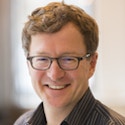
Pankaj Mehta, Ph.D.
Boston University
Pankaj Mehta works on collective behaviors in cell dynamics. He is particularly known for his information theoretic analysis of quorum sensing (where groups of many cells are much more sensitive to changes in environment than single cells). His theoretical work, in collaboration with the Bassler experimental group, demonstrated the importance of interference between different signaling channels and provided a mathematical model of the concentrations of receptor cells, which adjust themselves in response to multiple and time-varying signals so as to respond optimally to environmental cues. His research plans include the development and testing of a new quantitative framework for modeling high-dimensional ‘epigenetic landscapes’ and work on understanding collective behavior in cell populations.
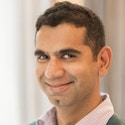
Olga Zhaxybayeva, Ph.D.
Dartmouth College
Olga Zhaxybayeva’s work focuses on how horizontal gene transfer influences (or influenced) the evolution of bacteria and archaea. Her work developing and implementing statistical techniques for monitoring the evolution of all of the genes in a bacterial genome showed that horizontal gene transfer has affected the evolution of much of the genomes of cyanobacteria, thermophilic bacteria and halophilic archaea. This and related work established horizontal gene transfer as an important driver of microbial evolution. Her research plan involves studying gene transfer agents (virus-like particles produced by some bacteria and archaea) to explore the possibility that horizontal gene transfer can provide an evolutionary force favoring cooperation and the emergence of complexity.
